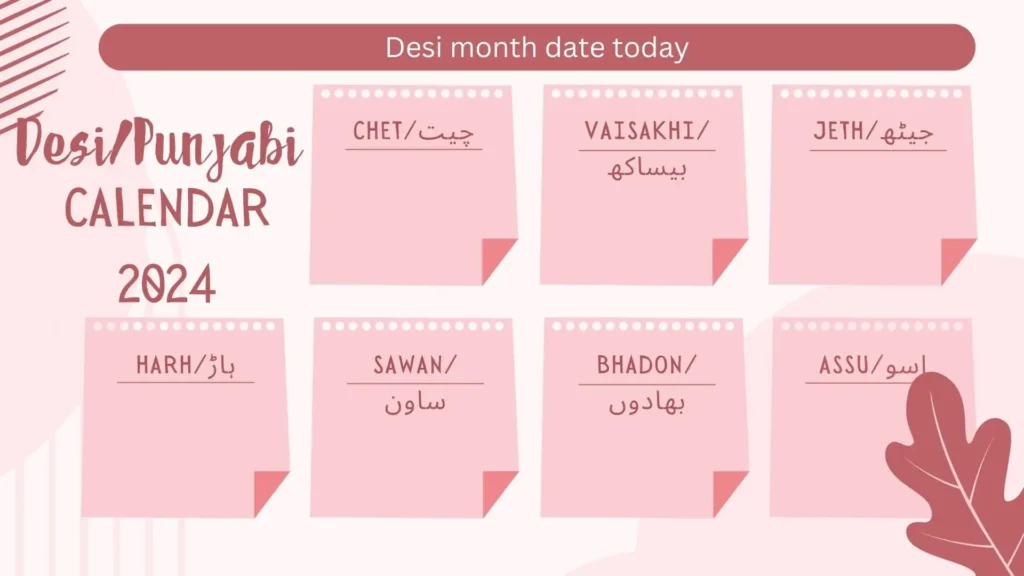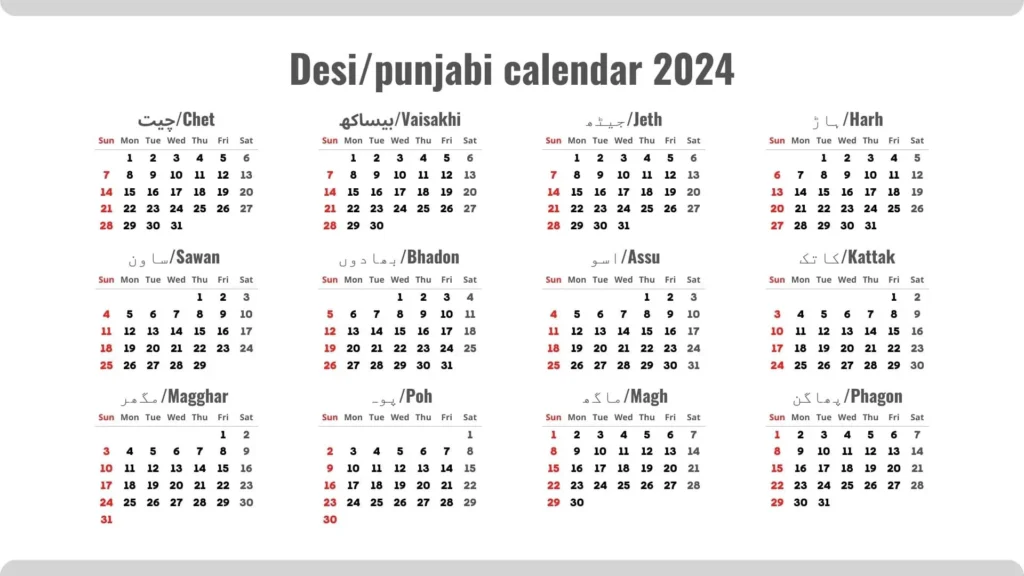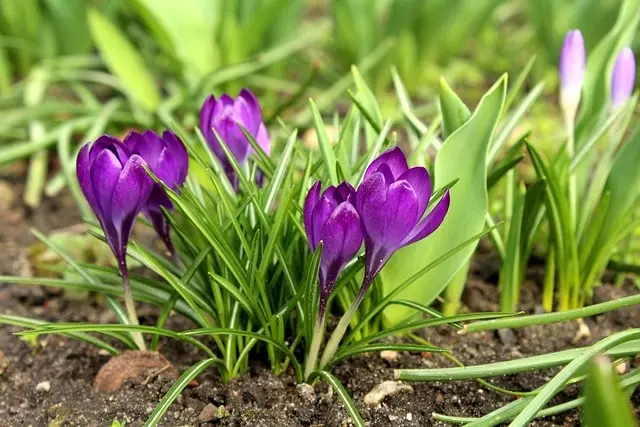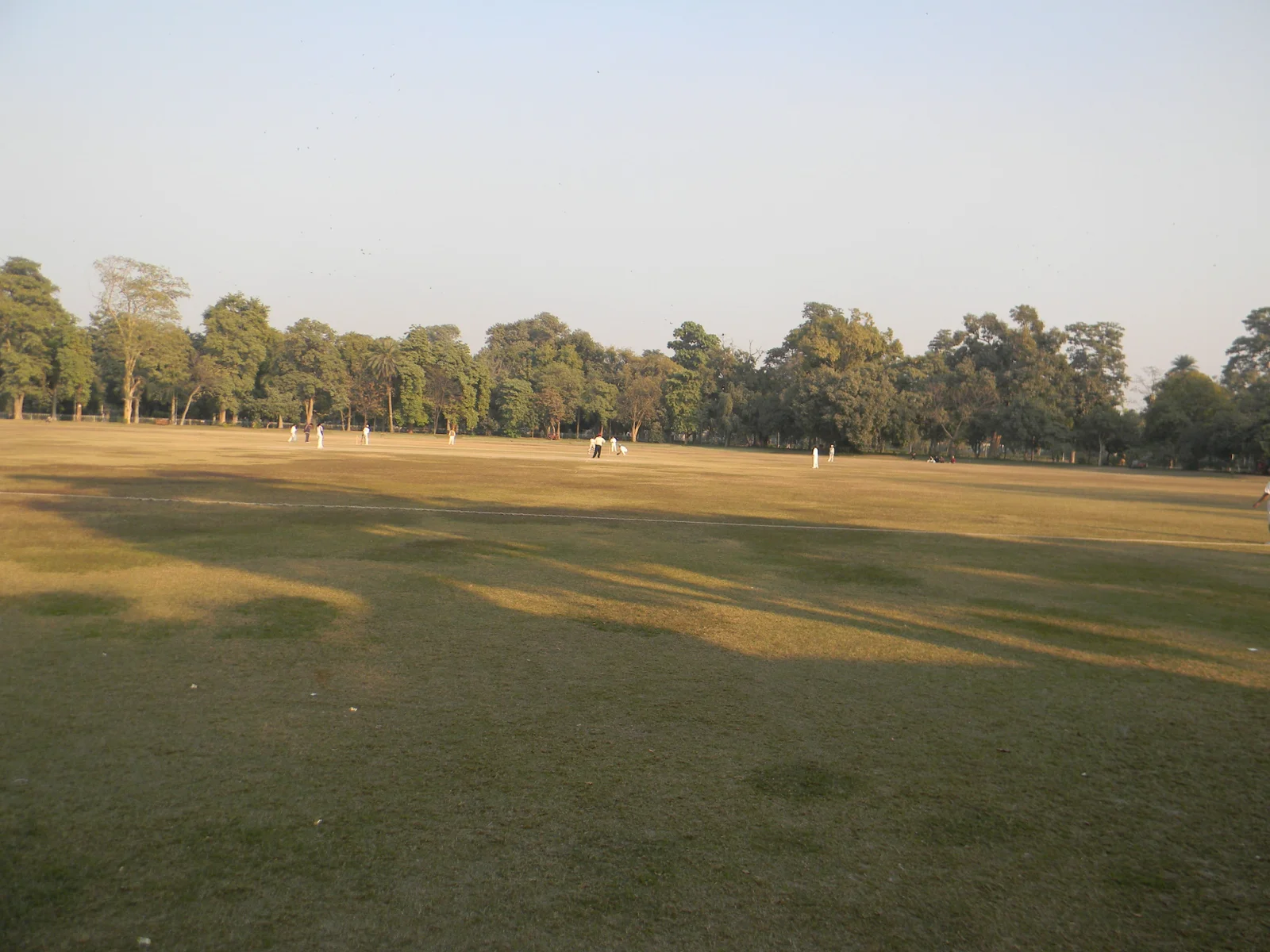Desi Month Date Today in Pakistan with Desi Month Calendar
According to the Nanakshahi calendar, also known as the Desi calendar or Punjabi Calendar, Desi month date today: .
نانک شاہی کیلنڈر کے مطابق، جسے دیسی کیلنڈر یا پنجابی کیلنڈر بھی کہا جاتا ہے، آج کی دیسی تاریخ: ۔
Today’s Date
Gregorian Date:
Desi Month Date Today:
Desi Month Date Today in Urdu:
Desi Month Date Today in Punjabi:
Desi month date today according to the Hindu Calendar
Today's Hindu Date
Vikram Samvat : 2082 Kalayukta
Shaka Year: 1947, Pausa 27
Here, you can easily find the Desi month date today of the lunar month according to the Hindu calendar. The Hindu lunar month is divided into two fortnights: Shukla Paksha (the waxing phase of the moon) and Krishna Paksha (the waning phase). Figure out if it’s Shukla Paksha (the waxing phase) or Krishna Paksha (the waning phase), or check if today is Amavasya (new moon) or Purnima (full moon).
In addition to the Hindu calendar, the Vikram Samvat and Shaka Samvat calendars provide other essential details.
Desi Month Calendar (All Years)
Desi month date today in different cities of Pakistan
| City | Desi Month Date Today |
|---|
It is difficult for many people to determine Desi month date today according to the Desi calendar and different cultural celebrations and events associated with specific Desi month dates because the Gregorian calendar has become the standard calendar used in our daily lives. You must perform specific calculations to see the Desi month dates according to the Gregorian calendar dates.
But don’t worry! We have provided you with the Desi Calendar and Desi month date today, along with the Gregorian Calendar, so that you can easily find the current date in the Desi month according to the Desi Calendar. We have also provided you with important Punjabi calendar dates for 2024 like Sangrand, Gurpurabs, Puranmashi, Masya, Panchami, and Dashmi.
Introduction to Desi Calendar
The Desi calendar is a colloquial term referring to the local calendars that are majorly followed in North India and Pakistan. It is associated with the Vikram Samvat calendar (Bikrami calendar) and the Nanakshahi calendar. The Vikram Samvat calendar (Bikrami calendar) is also known as the Hindu calendar, and the Nanakshahi calendar is also known as the Punjabi calendar.
Different Types of the Desi Calendar
The Vikram Samvat calendar, which is also known as the Bikrami Calendar or the Hindu calendar, and the Nanakshahi calendar, which is also known as the Punjabi calendar, is associated with the Desi calendar. The common thing between the Vikram Samvat (Bikram calendar) and the Hindu calendar is that they are Lunisolar calendars, and the Nanakshahi calendar (Punjabi calendar) is a solar calendar, which is the updated version of the Bikrami calendar. All of these calendars are known as the Desi calendar and are used in the Indian subcontinent.
Hindu calendar
The Hindu Calendar isn’t a single calendar but rather a collection of various lunisolar calendars used across different regions of India. This calendar marks most Hindu festivals and religious events, especially the Panchang (the almanac used for astrology). The months and dates change based on moon phases, with some local variations depending on the region (e.g., Gujarat, Maharashtra, and Bengal have slight differences).
The Saka Era Calendar (Saka era)
It began in 78 AD, introduced by King Kanishka. There is some debate over whether Kanishka started this era or not, but the government of India has officially adopted the Saka-era calendar. The first month of this calendar is Chaitra, followed by Vaishakha, Jyeshtha, Ashadha, Shravana, Bhadrapada, Ashwin, Kartika, Margashirsha, Pausha, Magha, and Phalguna. The first month of the Indian national calendar (the Saka calendar) can have either 30 or 31 days, depending on whether it’s a leap year.
In the Gregorian calendar, a leap year adds one day to February, making it 29 days. But in the Indian calendar, specifically the Saka calendar, if it’s a leap year, the first month (Chaitra) will have 31 days; if it’s a regular year, it’ll have 30 days. If Chaitra has 30 days, the calendar year starts on March 22. If it has 31 days, the year begins on March 21.Next, the five months following the first have 31 days each. After that, the remaining six months have 30 days each. So, out of the 12 months, five have 31 days, and six have 30 days.
The Vikram Samvat Calendar (the Bikrami Calendar) (Vikram Samvat era).
The name of the king associated with Vikram Samvat is controversial because it is said that King Chandragupta Vikramaditya started Vikram Samvat. But this Chandragupta is not the same as Chandragupta II of the Gupta dynasty, nor is he Chandragupta Maurya of the Maurya dynasty. It is believed that this Chandragupta Vikramaditya ruled during 56 BC, which is the origin of the Vikram Samvat calendar.
Why is this important? If you live in India, it is essential to know about the Indian calendar. Most of us know the Gregorian calendar because it is the default calendar on our phones. But if you look at the physical calendars hanging on your wall, you will often see two references: Vikram Samvat (sometimes abbreviated as “VS”) and Saka era.
The Saka era is important because it is India’s official national calendar, while Vikram Samvat is equally significant.
Nanakshahi Calendar
The Nanakshahi Calendar is the Sikh calendar introduced in 2003 to standardize the dates for Sikh events. It’s also based on the Bikrami Calendar but with a few key differences, mainly to fix dates according to the solar year. This change makes events like Guru Nanak’s birthday fall on the same date every year in the Gregorian calendar, unlike the Bikrami Calendar, where dates would shift.
However, some traditional Sikh institutions still prefer the Bikrami calendar due to its long association with Punjabi and Sikh culture.
How Are They Associated?
In essence, the Desi Calendar is an umbrella term reflecting the local culture’s calendar needs, deeply intertwined with the Bikrami/Vikram Samvat calendar. At the same time, the Nanakshahi is the Sikh-specific offshoot of this traditional system.
How do you convert between the Vikram Samvat, Saka era, and Gregorian calendars?
If you want to convert a year from the Gregorian calendar to the Saka era, subtract 78 years. To convert the Gregorian calendar to Vikram Samvat, add 57 years. The reverse is also true: to convert the Vikram Samvat calendar to the Gregorian, subtract 57 years. For the Saka era, add 78 years.
Let’s apply this logic. If we’re converting January 2019:
The calculations seem off because of a technicality in the first three months of the year (January, February, and March). These months overlap two different eras, which can cause slight variations. For example, March 2019 shows 2075 for Vikram Samvat instead of 2076 because it shows the end of one era and the beginning of the next. Similarly, the Saka era shows both 1940 and 1941, reflecting the transition between the two years. From April onwards, the conversion logic applies smoothly: subtract 78 for Saka and add 57 for Vikram Samvat.
In most cases, you’ll only need to know the general rule for conversions:
But remember, for January, February, and March, the rule changes slightly due to the overlap in the months.
What is meant by Desi month date today?

Desi month date today refers to the current date within the traditional Punjabi/Desi calendar system, also known as the ancient Bikrami calendar or the Nanakshahi calendar. This calendar system is used in various South Asian regions, including India and Pakistan. This calendar follows a system based on moon phases each month aligns with different Moon cycle stages. Each desi month may have other dates than the Gregorian month.
What is the Punjabi Calendar?

The Punjabi calendar is another name of the Desi calendar, also known as the ancient Bikrami calendar or the Nanakshahi calendar, used by the Punjabi people in different regions worldwide, but mainly in India and Pakistan. There are twelve months (Barah Mahinay) in this calendar. Indian Punjabi Sikhs use the Nanakshahi calendar which is the updated version of ancient Bikrami calendar, and Punjabi Hindus use the ancient Bikrami calendar.
Pakistani Punjabi Skihs use the Nanakshahi calendar, and Pakistani Punjabi Muslims use the Hijri calendar as well as the Desi calendar. It is because many Punjabi people in Pakistan celebrate their festival according to the Punjabi calendar, for example, Besakhi, also known as Vaisakhi. Muharram is also celebrated on the Tenth of “Harh” which is a Desi month.
History of the Punjabi/Desi Calendar
The Indo-Pak subcontinent possesses one of the oldest calendar systems, the Punjabi calendar, often called the Desi calendar, dating back to 100 BC. In the reign of Raja Bikram Ajit, the Bikrami calendar originated and was named after this ancient Indian king. Each year in the Bikrami calendar consists of 365 days and is divided into twelve months, known as “Barah Mahinay.” Nine of these months comprise 30 days each, while one month, Vesakh, contains 31 days, and two months have 32 days. The year in the Bikrami calendar commences with the month of “Chet.” Different seasons bring different weather changes throughout the year. Each of the 12 months has its type of weather, affecting plants and nature differently.
Use of Desi Calendar in Pakistan
Desi Mahinay (Months) names in Desi Calendar
| Month | Start Date | End Date |
| Chet | March 14 | April 13 |
| Vaisakhi | April 14 | May 14 |
| Jeth | May 15 | June 14 |
| Harh | June 15 | July 15 |
| Sawan | July 16 | August 15 |
| Bhadon | August 16 | September 14 |
| Assu | September 15 | October 14 |
| Kattak | October 15 | November 13 |
| Magghar | November 14 | December 13 |
| Poh | December 14 | January 12 |
| Magh | January 13 | February 11 |
| Phagon | February 12 | March 13 |
Chet (start date: March 14 – End date: April 13)
Chet is the first month in the Desi calendar. It’s like the beginning of the transition from winter to summer season during the month of Chet. It’s not so cold anymore. New plants and flowers start growing.

Vaishakhi (start date: April 14 – End date: May 14)

Vaisakhi is the second desi month after Chet. It is when the weather starts getting warmer and days are getting longer. Farmers start harvesting their crops this month, and trees provide shade from the increasing heat.
Jeth (start date: May 15 – End date: June 14)
Jeth is the third and one of the hottest months. The sun shines bright, and it feels quite warm outside. But it’s the perfect time for plants to grow because they can soak up lots of sunlight.

Harh (start date: June 15 – End date: July 15)

Harh is the fourth month of the Desi calendar. It comes during the peak of summer. It’s super hot during this time. But during this time, plants are growing and absorbing heat. Harvested fields are growing and getting ready to cut.
Sawan (start date: July 16 – End date: August 15)
Sawan is the fifth month of the Desi calendar. Sawan is the rainy season, bringing relief from the heat with cool rains. It’s like nature’s way of relieving us from the hot weather. It is the time when plants grow a lot because of the plenty of water.

Bhadon (start date: August 16 – End date: September 14)

Bhadon is the sixth month of the Desi calendar and arrives during the rainy season. The weather is not too hot or cold but very damp. It’s the right time for plants to grow.
Assu (start date: September 15 – End date: October 14)
Assu is the seventh month of the Desi calendar and comes after the rainy season nights are slightly more relaxed than days. But the days are mild and slightly hotter.

Katak (start date: October 15 – End date: November 13)

Katak is the eighth month of the Desi calendar. It comes after Assu and brings pleasant weather after the rains. It’s neither too hot nor too cold. It’s a good time for outdoor activities and enjoying nature.
Magar (start date: November 14 – End date: December 13)
Magar is the ninth month of the Desi calendar and the start of winter. Trees start resting, and the weather feels nice and cool. Days starting become shorter. It’s a calm and peaceful time

Poh (start date: December 14 – End date: January 12)

Poh is the tenth month of the Desi calendar and the coldest month with snowfalls. Plants need extra care during this time, and we must water them less. Many plants are brought inside to keep them warm.
Magh (start date: January 13 – End date: February 11)
Magh is the eleventh month of the Punjabi/Desi calendar and is still the coldest month. But it is a sign that spring is coming soon. Towards the end of Magh, some plants start waking up from their winter sleep.

Phagon (start date: February 12- End date: March 13)

Phagon is the twelfth and last month of the Punjabi calendar. It is the beginning of spring. It’s a happy time with colorful flowers blooming everywhere. The weather is pleasant, and it feels like nature is waking up from its winter nap.
Difference Between the Bikrami Calendar and Nanakshahi Calendar
Bikrami Calendar
Nanakshahi Calendar
Sangrand Dates in Punjabi/Desi calendar
In the Nanakshahi calendar, sangrand is the first day of the month. It is the beginning of the new month and is culturally and spiritually significant for Sikhs. On this day, people do prayers or perform special rituals.
| English month Date | Festival | Punjabi month Date |
| 13th January | Sangrand (Magh) | 01 Magh |
| 12th February | Sangrand (Phagun) | 01 Phagun |
| 14th March | Sangrand (Chet) | 01 Chet |
| 14th April | Sangrand (Vaisakh) | 01 Vaisakh |
| 15th May | Sangrand (Jeth) | 01 Jeth |
| 15th June | Sangrand (Harh) | 01 Harh |
| 16th July | Sangrand (Sawan) | 01 Sawan |
| 16th August | Sangrand (Bhadon) | 01 Bhadon |
| 15th September | Sangrand (Assu) | 01 Assu |
| 15th October | Sangrand (Katak) | 01 Katak |
| 14th November | Sangrand (Maghar) | 01 Maghar |
| 14th December | Sangrand (Poh) | 01 Poh |
Puranmashi (Purnima) Dates in Punjabi/Desi calendar 2024
In the nanakshahi calendar, puranmashi is the full moon night. During puranmashi, because of the full Moon, the sky is bright and is considered a very special and lucky time. People hold religious gatherings and celebrations in Puranmashi. It is time for community events and helping others.
-
Pausha Purnima Vrat – January 25, 2024, Thursday
Begins: 09:19 PM, Jan 24 | Ends: 10:53 PM, Jan 25 -
Magha Purnima Vrat – February 24, 2024, Saturday
Begins: 03:03 PM, Feb 23 | Ends: 05:29 PM, Feb 24 -
Phalguna Purnima Vrat – March 24, 2024, Sunday
Begins: 09:24 AM, Mar 24 | Ends: 11:59 AM, Mar 25 -
Chaitra Purnima Vrat – April 23, 2024, Tuesday
Begins: 02:55 AM, Apr 23 | Ends: 04:48 AM, Apr 24 -
Vaishakha Purnima Vrat – May 23, 2024, Thursday
Begins: 06:17 PM, May 22 | Ends: 06:52 PM, May 23 -
Jyeshtha Purnima Vrat – June 21, 2024, Friday
Begins: 07:01 AM, Jun 21 | Ends: 06:07 AM, Jun 22 -
Ashadha Purnima Vrat – July 21, 2024, Sunday
Begins: 05:29 PM, Jul 20 | Ends: 03:16 PM, Jul 21 -
Shravana Purnima Vrat – August 19, 2024, Monday
Begins: 02:34 AM, Aug 19 | Ends: 11:25 PM, Aug 19 -
Bhadrapada Purnima Vrat – September 17, 2024, Tuesday
Begins: 11:14 AM, Sep 17 | Ends: 07:34 AM, Sep 18 -
Ashwina Purnima Vrat – October 17, 2024, Thursday
Begins: 08:10 PM, Oct 16 | Ends: 04:25 PM, Oct 17 -
Kartika Purnima Vrat – November 15, 2024, Friday
Begins: 05:49 AM, Nov 15 | Ends: 02:28 AM, Nov 16 -
Margashirsha Purnima Vrat – December 15, 2024, Sunday
Begins: 04:28 PM, Dec 14 | Ends: 02:01 PM, Dec 15
Masya (Amavasya) Dates in Punjabi/Desi calendar 2024
Masya refers to the No Moon night, also known as Amavasya in the Lunar calendar. During masya, because of the no moon, the sky is completely dark. Masya is a time for thinking about spiritual things. People do prayers and special rituals during masya. It’s seen as a good time for various religious activities.
-
Pausha Amavasya – January 11, 2024, Thursday
Begins: 07:40 PM, Jan 10 | Ends: 04:56 PM, Jan 11 -
Magha Amavasya – February 9, 2024, Friday
Begins: 07:32 AM, Feb 09 | Ends: 03:58 AM, Feb 10 -
Phalguna Amavasya – March 10, 2024, Sunday
Begins: 05:47 PM, Mar 09 | Ends: 01:59 PM, Mar 10 -
Chaitra Amavasya – April 8, 2024, Monday
Begins: 02:51 AM, Apr 08 | Ends: 11:20 PM, Apr 08 -
Vaishakha Amavasya – May 7-8, 2024, Tuesday-Wednesday
Begins: 11:10 AM, May 07 | Ends: 08:21 AM, May 08 -
Jyeshtha Amavasya – June 6, 2024, Thursday
Begins: 07:24 PM, Jun 05 | Ends: 05:37 PM, Jun 06 -
Ashadha Amavasya – July 5, 2024, Friday
Begins: 04:27 AM, Jul 05 | Ends: 03:56 AM, Jul 06 -
Shravana Amavasya – August 4, 2024, Sunday
Begins: 03:20 PM, Aug 03 | Ends: 04:12 PM, Aug 04 -
Bhadrapada Amavasya – September 2, 2024, Monday
Begins: 04:51 AM, Sep 02 | Ends: 06:54 AM, Sep 03 -
Ashwina Amavasya – October 2, 2024, Wednesday
Begins: 09:09 PM, Oct 01 | Ends: 11:48 PM, Oct 02 -
Kartika Amavasya – November 1, 2024, Friday
Begins: 03:22 PM, Oct 31 | Ends: 05:46 PM, Nov 01 -
Margashirsha Amavasya – December 1, 2024, Sunday
Begins: 09:59 AM, Nov 30 | Ends: 11:20 AM, Dec 01 -
Pausha Amavasya – December 30, 2024, Monday
Begins: 03:31 AM, Dec 30 | Ends: 03:26 AM, Dec 31
Gurpurabs Dates in Punjabi/Desi calendar 2024-2025
Gurpurabs, also known as Gurpurb or Gurpurub, refers to the anniversary of the birth of Sikh Guru. Gurpurabs hold significant importance in the Sikh religion. Sikhs come together from all over the world to celebrate and remember the life teachings and contributions of the Guru, whose birth anniversary is being celebrated.
| English month Date | Gurpurabs | Punjabi month date |
| 17-Jan-2024 | Prakash Gurpurab Sri Guru Gobind Singh ji | 04 Magh 555 |
| 22-Feb-2024 | Prakash Gurpurab Sri Guru Harirai Sahib ji | 10 Phagun 555 |
| 07-Apr-2024 | Gurgaddi Gurpurab Sri Guru Harirai Sahib ji | 25 Chet 556 |
| 09-Apr-2024 | Gurgaddi Gurpurab Sri Guru Amardas ji | 27 Chet 556 |
| 12-Apr-2024 | Jyoti jyot Gurpurab Sri Guru Angad Dev ji | 30 Chet 556 |
| 13-Apr-2024 | Jyoti jyot Gurpurab Sri Guru Harigobind Sahib ji | 01 Vaisakh 556 |
| 22-Apr-2024 | Gurgaddi Gurpurab Sri Guru Teg Bahadur ji, Jyoti jyot Gurpurab Sri Guru Harikrishan Sahib ji | 10 Vaisakh 556 |
| 29-Apr-2024 | Prakash Gurpurab Sri Guru Teg Bahadur ji | 17 Vaisakh 556 |
| 30-Apr-2024 | Prakash Gurpurab Sri Guru Arjan Dev ji | 18 Vaisakh 556 |
| 09-May-2024 | Prakash Gurpurab Sri Guru Angad Dev ji | 27 Vaisakh 556 |
| 22-May-2024 | Prakash Gurpurab Sri Guru Amardas ji | 09 Jeth 556 |
| 31-May-2024 | Gurgaddi Gurpurab Sri Guru Harigobind Sahib ji | 18 Jeth 556 |
| 10-Jun-2024 | Jyoti jyot Gurpurab Sri Guru Arjan Dev ji | 28 Jeth 556 |
| 22-Jun-2024 | Prakash Gurpurab Sri Guru Harigobind Sahib ji | 09 Harh 556 |
| 29-Jul-2024 | Prakash Gurpurab Sri Guru Harikrishan Sahib ji | 14 Sawan 556 |
| 04-Sep-2024 | Pehla Prakash Gurpurab Sri Guru Granth Sahib ji | 20 Bhadon 556 |
| 05-Sep-2024 | Gurgaddi Gurpurab Sri Guru Arjan Dev ji | 21 Bhadon 556 |
| 06-Sep-2024 | Jyoti jyot Gurpurab Sri Guru Ramdas ji | 22 Bhadon 556 |
| 16-Sep-2024 | Gurgaddi Gurpurab Sri Guru Ramdas ji | 01 Assu 556 |
| 18-Sep-2024 | Jyoti jyot Gurpurab Sri Guru Amardas ji | 03 Assu 556 |
| 22-Sep-2024 | Gurgaddi Gurpurab Sri Guru Angad Dev ji | 07 Assu 556 |
| 27-Sep-2024 | Jyoti jyot Gurpurab Sri Guru Nanak Dev ji | 12 Assu 556 |
| 19-Oct-2024 | Prakash Gurpurab Sri Guru Ramdas ji | 03 Katak 556 |
| 25-Oct-2024 | Jyoti jyot Gurpurab Sri Guru Harirai Sahib ji, Gurgaddi Gurpurab Sri Guru Harikrishan Sahib ji | 09 Katak 556 |
| 03-Nov-2024 | Gurgaddi Gurpurab Sri Guru Granth Sahib ji | 18 Katak 556 |
| 06-Nov-2024 | Jyoti jyot Gurpurab Sri Guru Gobind Singh ji | 21 Katak 556 |
| 15-Nov-2024 | Prakash Gurpurab Sri Guru Nanak Dev ji | 30 Katak 556 |
| 04-Dec-2024 | Gurgaddi Gurpurab Sri Guru Gobind Singh ji | 19 Maghar 556 |
| 06-Dec-2024 | Jyoti jyot Gurpurab Sri Guru Teg Bahadur ji | 21 Maghar 556 |
| 06-Jan-2025 | Prakash Gurpurab Sri Guru Gobind Singh ji | 23 Poh 556 |
| 10-Feb-2025 | Prakash Gurpurab Sri Guru Harirai ji | 28 Magh 556 |
Panchami Dates in Punjabi/Desi calendar 2024
In Hindu culture, Panchami is the fifth day of the lunar fortnight. Panchami is derived from the Sanskrit word Pancha, which means five. Panchami is important for Saraswati puja, which falls during the Hindu month of Magha. On Panchami, it is also the fifth day of Navratri, a festival that lasts nine nights.
-
Panchami Tithi in December
Krishna Paksha Panchami: Dec 31, 11:26 AM – Jan 01, 1:58 PM
Shukla Paksha Panchami (Vivah Panchami): Dec 05, 12:19 PM – Dec 06, 11:38 AM
Krishna Paksha Panchami: Dec 19, 9:33 AM – Dec 20, 10:19 AM -
Panchami Tithi in January
Shukla Paksha Panchami: Jan 15, 4:29 AM – Jan 16, 1:47 AM
Krishna Paksha Panchami: Jan 30, 8:24 AM – Jan 31, 11:06 AM -
Panchami Tithi in February
Shukla Paksha Panchami (Basant Panchami): Feb 13, 2:12 PM – Feb 14, 11:40 AM
Krishna Paksha Panchami: Feb 29, 3:49 AM – Mar 01, 5:52 AM -
Panchami Tithi in March
Shukla Paksha Panchami: Mar 14, 12:56 AM – Mar 14, 10:56 PM
Krishna Paksha Panchami (Rang Panchami): Mar 29, 7:51 PM – Mar 30, 8:44 PM -
Panchami Tithi in April
Shukla Paksha Panchami (Lakshmi Panchami): Apr 12, 12:42 PM – Apr 13, 11:34 AM
Krishna Paksha Panchami: Apr 28, 7:52 AM – Apr 29, 7:27 AM -
Panchami Tithi in May
Shukla Paksha Panchami: May 12, 1:34 AM – May 13, 1:34 AM
Krishna Paksha Panchami: May 27, 4:24 PM – May 28, 2:54 PM -
Panchami Tithi in June
Shukla Paksha Panchami: Jun 10, 3:45 PM – Jun 11, 4:57 PM
Krishna Paksha Panchami: Jun 25, 10:41 PM – Jun 26, 8:25 PM -
Panchami Tithi in July
Shukla Paksha Panchami (Skanda Panchami): Jul 10, 7:22 AM – Jul 11, 9:34 AM
Krishna Paksha Panchami: Jul 25, 4:10 AM – Jul 26, 1:28 AM -
Panchami Tithi in August
Shukla Paksha Panchami (Nag Panchami, Garuda Panchami): Aug 09, 12:07 AM – Aug 10, 2:44 AM
Krishna Paksha Panchami (Raksha Panchami): Aug 23, 10:09 AM – Aug 24, 7:22 AM -
Panchami Tithi in September
Shukla Paksha Panchami (Rishi Panchami): Sep 07, 5:07 PM – Sep 08, 7:28 PM
Krishna Paksha Panchami: Sep 21, 5:44 PM – Sep 22, 3:13 PM -
Panchami Tithi in October
Shukla Paksha Panchami (Lalita Panchami): Oct 07, 9:18 AM – Oct 08, 10:48 AM
Krishna Paksha Panchami: Oct 21, 3:47 AM – Oct 22, 1:59 AM -
Panchami Tithi in November
Shukla Paksha Panchami (Labh Panchami): Nov 05, 11:47 PM – Nov 07, 12:11 AM
Krishna Paksha Panchami: Nov 19, 4:58 PM – Nov 20, 4:20 PM
Dashmi Dates in Punjabi/Desi calendar 2024
Dashmi, also known as Dussehra, is the tenth day of Navratri in the Hindu lunar calendar.
-
Dashami Tithi in January
Krishna Paksha Dashami: Jan 05, 11:16 PM – Jan 07, 12:12 AM
Shukla Paksha Dashami: Jan 19, 7:22 PM – Jan 20, 6:57 PM -
Dashami Tithi in February
Krishna Paksha Dashami: Feb 04, 5:20 PM – Feb 05, 4:55 PM
Shukla Paksha Dashami: Feb 18, 7:46 AM – Feb 19, 8:20 AM -
Dashami Tithi in March
Krishna Paksha Dashami: Mar 05, 7:34 AM – Mar 06, 6:01 AM
Shukla Paksha Dashami: Mar 18, 10:19 PM – Mar 19, 11:52 PM -
Dashami Tithi in April
Krishna Paksha Dashami: Apr 03, 5:59 PM – Apr 04, 3:44 PM
Shukla Paksha Dashami: Apr 17, 2:44 PM – Apr 18, 5:02 PM -
Dashami Tithi in May
Krishna Paksha Dashami: May 03, 1:23 AM – May 03, 10:54 PM
Shukla Paksha Dashami: May 17, 8:19 AM – May 18, 10:53 AM -
Dashami Tithi in June
Krishna Paksha Dashami: Jun 01, 6:54 AM – Jun 02, 4:35 AM
Shukla Paksha Dashami (Dasha Paapa Hara Ganga Dashami): Jun 16, 2:02 AM – Jun 17, 4:14 AM
Krishna Paksha Dashami: Jun 30, 11:49 AM – Jul 01, 9:56 AM -
Dashami Tithi in July
Shukla Paksha Dashami: Jul 15, 6:49 PM – Jul 16, 8:04 PM
Krishna Paksha Dashami: Jul 29, 5:26 PM – Jul 30, 4:15 PM -
Dashami Tithi in August
Shukla Paksha Dashami: Aug 14, 9:54 AM – Aug 15, 9:57 AM
Krishna Paksha Dashami: Aug 28, 1:03 AM – Aug 29, 12:50 AM -
Dashami Tithi in September
Shukla Paksha Dashami: Sep 12, 11:03 PM – Sep 13, 10:00 PM
Krishna Paksha Dashami: Sep 26, 11:56 AM – Sep 27, 12:50 PM -
Dashami Tithi in October
Shukla Paksha Dashami (Vijaya Dashami): Oct 12, 10:29 AM – Oct 13, 8:39 AM
Krishna Paksha Dashami: Oct 26, 2:53 AM – Oct 27, 4:54 AM -
Dashami Tithi in November
Shukla Paksha Dashami: Nov 10, 8:31 PM – Nov 11, 6:17 PM
Krishna Paksha Dashami: Nov 24, 9:50 PM – Nov 26, 12:32 AM -
Dashami Tithi in December
Shukla Paksha Dashami: Dec 10, 5:32 AM – Dec 11, 3:13 AM
Krishna Paksha Dashami: Dec 24, 7:22 PM – Dec 25, 9:59 PM
Conclusion
The Punjabi/Desi calendar is different from Gregorian calendar (English calendar), but it’s important to Punjabi culture. It shows the dates based on the moon’s phases, unlike our regular calendar. To help you understand it better, we’ve made a list showing the Desi month dates for every day of the year. This calendar has been around for a long time and has twelve months, each with its own weather and special celebrations. So, with our guide, you can easily know which Punjabi date matches with today’s date.
